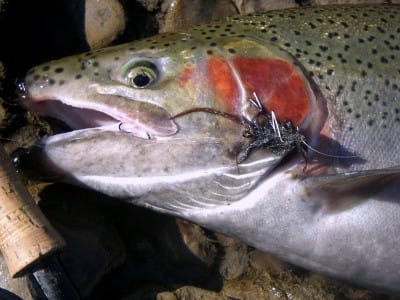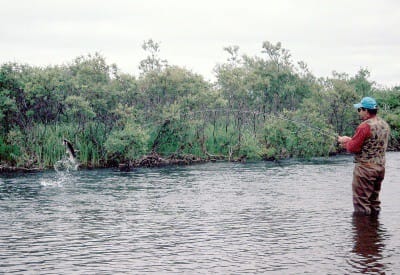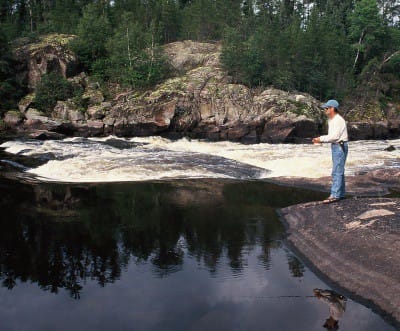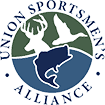
Some of the best fishing in America for wild trout is found in southwest Montana and northwest Wyoming. Anglers for decades from around the world have converged on the region’s blue-ribbon trout waters in spring, summer and fall.
Often, however, the most touted regional waters are rivers like the Missouri, lower Madison and Yellowstone, the Big Hole, Beaverhead and Jefferson.
But great wild trout fishing with easy access also can be found inside 2.2 million acre Yellowstone National Park. Even a casual fisherman entering the park is almost immediately overwhelmed by its beauty, particularly its rivers. And almost anyone with even modest trout fishing experience can succeed in catching some memorable fish.
Countless visitors annually enter Yellowstone to view its geysers, hot springs and other natural wonders. But if you’re an angler and don’t take advantage of fishing seriously for at least a day or two, you’ve missed out on one of the great trout venues of America.
I’ve fished the park almost annually for a half-century and have witnessed huge changes in Yellowstone’s rules and regulations governing fishing and fishermen. Access, harvest restrictions, methods of fishing and seasons, and “closed” areas come and go like only federal regulations are allowed to on public property. But despite the never-ending litany of access knowledge that may be needed to tap Yellowstone’s fishing (jigs, and even split-shot for flies, are illegal for park use, for example), be assured it’s worth the effort, and angling can be truly world class. And it’s inexpensive at just $15 for a 3-day license.
Fishing season in the park runs from late May through early November. While experienced anglers can enjoy good fishing during all those months, summer is generally best because fly hatches are consistent and that makes for happy, feeding fish and smiling anglers who co-mingle with them.

Fly anglers find Yellowstone heaven on earth, and while spin fishermen can score using Mepps and Little Cleos, dry flies, bead-head flies and Muddler Minnows are the tickets to consistent trout catching success. You need not be a tournament-class caster. But spend at least some time learning to get 50 feet of fly line out in front of you without churning the surface to a froth. You’ll spook fewer trout and catch plenty if you practice a bit at home.
You also should have chest-high waders. Hip boots can work, but chest-highs allow easy wading about everywhere, and you’ll catch a lot more trout.
I’ve experienced afternoons on the Yellowstone River below Yellowstone Lake where I’d catch-and-release 50 cutthroat trout to 3 pounds working mid-river schools with dry flies. While anglers on the river bank who had no waders or even hip boots, caught only a fish or two simply because they could not wade to the distant river runs, riffles and slicks where the bulk of the trout were stationed and feeding.
The park has thousands of miles of rivers and streams and hundreds of lakes. Most offer excellent fishing. Some are far off the beaten track, best tapped by folks in good shape who backpack in for a day or two and enjoy great fishing in wild country (beware of bear closed areas, and stay clear of bison, rutting elk and moose, too). Some lakes also offer fishing from boats, kayaks and canoes, with Yellowstone Lake one of the best.
But there is plenty of great public river trout fishing near the various “loop roads” that wind through the park. Be advised, however, that you’re wise to map out your fishing spot well beforehand, and get there early, especially during the peak of the summer tourist season. Traffic can be slow, and it can take a good while to travel even a few miles in some of the mountain areas where people stop to observe game and scenic overlooks.

One of the park’s great trout rivers is the Firehole, and because it’s heated in places by geothermal waters, it warms fast and offers some of the best early season fishing starting by Memorial Day. Afternoon hatches of mayflies are common, and excellent Firehole fishing usually continues through June. By then some of the other park rivers are clearing from snow melt and turning on, including the Madison, Lewis and Gibbon.
By early July the Yellowstone and Lamar have cleared and dropped, and fishing throughout the entire park kicks into gear through the summer and into early autumn. The exceptions are the Madison and Firehole, which often become too warm and don’t turn back on until early fall.
During the heat of summer, excellent and often overlooked trout fishing can be found on many of the smaller creeks that feed the bigger rivers mentioned. Also, lake fishing comes on strong, which is perfect for family outings.
It may sound like a cliché, but almost all Yellowstone Park water holds trout, and good fishing can be found almost wherever it’s wet enough for a fish to swim. Honest.
Good access is available through a number of Park entrances, with West Yellowstone a personal favorite. Camping and overnight lodging are readily available, and during the height of the summer season anglers are wise to make reservations well ahead of time. Daily fishing junkets into-and-out-of the park are very doable, however, out of West Yellowstone and other towns on the park borders.
While fishing on your own is easy and fun throughout Yellowstone, guided trips into the park on rivers and lakes are available. They’re best booked through reliable services such as Bud Lilly’s in West Yellowstone (www.budlillys.com).
The Union Sportsmen’s Alliance website is designed to provide valuable articles about hunting, fishing and conservation for members of AFL-CIO affiliated labor unions and all sportsmen and sportswomen who appreciate hunting and fishing and want to preserve our outdoor heritage for future generations. If you would like your own story and experience from the outdoors to be considered for our website, please email us at [email protected].







